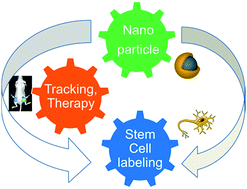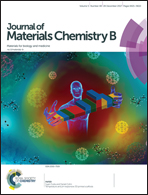Recent progress in nanotechnology for stem cell differentiation, labeling, tracking and therapy
Abstract
Stem cells offer great potential for regenerative medicine due to their excellent capability to differentiate into a specialized cell type of the human body. Recently, nanomaterial based scaffolds (e.g. graphene), biodegradable polymers (e.g. PLGA: poly-D,L-lactic-co-glycolic acid), and inorganic nanoparticles (NPs, e.g. metallic, magnetic, upconversion) have made considerable advances in controlling the differentiation of stem cells. Some of the notable advances include the development of a variety of NPs such as gold, silica, selenium and graphene quantum dots (QDs) for the controlled differentiation of stem cells – human mesenchymal stem cells (hMSCs), and magnetic core–shell NPs (e.g. ZnFe2O4–Au) for the control of neural stem cells (NSCs). Multimodal imaging (MR, optical, ultrasound, photoacoustic) of stem cells provides opportunities for probing the fate of implanted cells, thereby determining the therapeutic efficacy. Novel multifunctional NPs have been developed over the years, and probed using the aforementioned imaging techniques for stem cell research. This review article underscores the recent progress in nanotechnology for stem cell differentiation, labeling, tracking and therapy. Nano/biomaterial assisted stem cell therapies for bone, heart, and liver regeneration are also delineated.

- This article is part of the themed collection: Recent Review Articles


 Please wait while we load your content...
Please wait while we load your content...